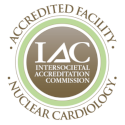A transesophageal Echo or TEE, is a procedure that uses ultrasound to examine the heart. Unlike a standard echocardiogram (echo), which is done from outside the chest, a TEE is done from inside the esophagus. The esophagus lies just behind the heart allowing the TEE to provide much clearer images of the heart than a standard echo.
A long flexible tube, or probe, is inserted into the mouth and down the esophagus. This small probe, also called a transducer, transmits ultrasound waves that bounce off various parts of the heart. The images are viewed on a computer and show your physician the actual shape and motion of the different parts of the heart. They also show the flow of blood through the heart chambers and valves.



